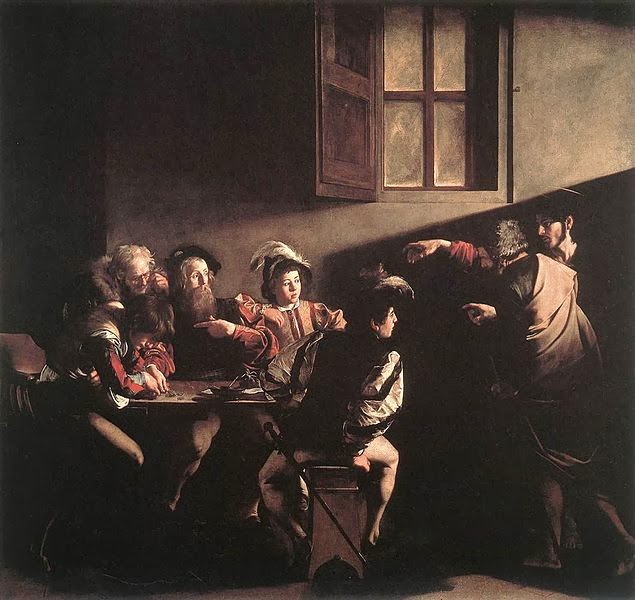1. Bury the dead; In the background, two men carry a dead man (of whom only the feet are visible).
2 and 3. Visit the imprisoned, and feed the hungry; On the right, a woman visits an imprisoned man and gives him milk from her breast. This image alludes to the classical story of Roman Charity.
4. Shelter the homeless; A pilgrim (third from left, as identified by the shell in his hat) asks an innkeeper (at far left) for shelter.
5. Clothe the naked; St. Martin of Tours, fourth from the left, has torn his robe in half and given it to the naked beggar in the foreground, recalling the saint's popular legend.
6. Visit the sick; St. Martin greets and comforts the beggar who is a cripple.
7. Refresh the thirsty; Samson (second from the left) drinks water from the jawbone of an ass. (Source - Wikipedia)
The Seven Acts of Mercy, with Caravaggio directing what we "see", seem to come to life and offer a sense of faith and believability. Again, characters are drawn in a realistic style with color, and size and in addition, with dark-light contrast to create a natural/real setting. The source of lighting appears to come from the left side of the painting, which is evidenced by the shadow cast by the angels wings onto the right of building(opposite side of the painting). Its shines from left to right. This is accomplished by either leaving certain areas untouched on the canvas and adding/editing media on the canvas. The angel's arm reaching down, is surrounding by heavily dark painted section. The contrast causes a perceived "lighting" effect and causes the subject matter to display an inferred volume.



No comments:
Post a Comment